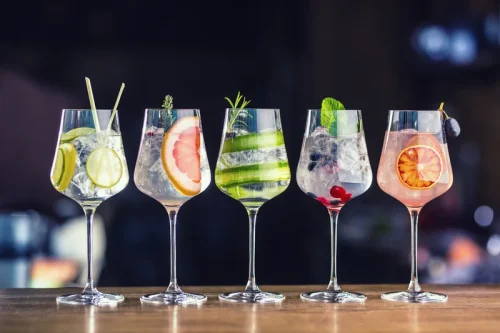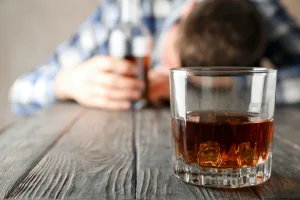Dans l’univers des jeux en ligne, il est essentiel de maximiser ses gains et d’optimiser ses expériences de jeu. L’un des moyens les plus efficaces d’y parvenir est de tirer parti des points de fidélité et des crédits bonus offerts par les casinos. Le système mis en place par Cresus Casino est conçu pour récompenser les joueurs réguliers à travers divers mécanismes attrayants.
Les membres ont accès à des promotions exclusives qui leur permettent de multiplier leurs gains tout en profitant d’une expérience de jeu améliorée. Que ce soit via des cashback ou des bonus sur dépôt, chaque joueur peut voir sa chance augmentée lorsque les récompenses s’accumulent.
De plus, le programme VIP attire de nombreux passionnés grâce à ses avantages uniques. Les joueurs les plus engagés peuvent profiter d’un traitement de faveur, ce qui rend chaque moment passé sur la plateforme encore plus réjouissant. Avec des récompenses qui ne cessent de croître, chaque partie devient une nouvelle occasion de se réjouir d’avantages inédits.
Comment s’inscrire au programme Casino Rewards ?
Pour participer au système de fidélisation de Cresus Casino, il est primordial de suivre quelques étapes simples. Tout d’abord, rendez-vous sur le site officiel du casino en ligne. Une fois sur la page d’accueil, cherchez l’option d’inscription pour créer un compte. Cette étape vous permettra d’accéder à divers avantages, tels que des promotions exclusives et des crédits bonus.
Ensuite, remplissez les informations demandées, comme votre nom, prénom, adresse e-mail et mot de passe. Assurez-vous que toutes les données sont correctes afin d’éviter des complications lors des transactions. Une fois votre compte créé, vous serez automatiquement intégré dans le système et pourrez commencer à accumuler des points qui se transformeront en récompenses.
Après votre inscription, pensez à profiter des offres de cashback et à explorer les possibilités offertes par le programme VIP. Ces options vous permettront de maximiser vos gains et d’obtenir encore plus de rétributions tout en jouant sur Cresus Casino.
Enfin, n’oubliez pas de vérifier régulièrement votre compte pour vous tenir informé des nouvelles promotions et des événements spéciaux qui vous permettront d’optimiser votre expérience de jeu. En vous inscrivant dès maintenant, vous pourrez bénéficier de tous ces avantages et vivre une expérience enrichissante avec votre casino en ligne favori.
Quels sont les bénéfices des points de fidélité ?
Les points de fidélité offrent une multitude de bénéfices aux joueurs. En accumulant ces précieux points, vous avez la possibilité de bénéficier de cashback sur vos pertes, ce qui permet d’augmenter votre budget de jeu. Ce format de récompense est particulièrement apprécié, car il vous aide à prolonger votre expérience tout en minimisant les pertes éventuelles.
De plus, les membres profitent de promotions exclusives qui ne sont accessibles qu’à ceux qui font partie du programme. Ces offres peuvent inclure des bonus sur dépôt, des tours gratuits ou encore des invitations à des événements spéciaux, que ce soit sur cresus casino ou d’autres plateformes. Les opportunités sont variées et attractives.
En intégrant l’espace VIP, les joueurs expérimentés bénéficient de privilèges supplémentaires. Cela comprend des taux de conversion de points plus élevés et l’accès à des événements privés, offrant une expérience de jeu encore plus enrichissante. Les récompenses accumulées au fil du temps permettent de réellement maximiser les plaisirs du jeu.
Pour plus d’informations sur les offres et les astuces, vous pouvez consulter des sites comme lpchardeuil.fr qui offrent des conseils utiles et des mises à jour régulières sur les promotions en cours.
Quelles sont les conditions d’utilisation des récompenses obtenues ?
Lorsqu’il s’agit de bénéficier des récompenses accumulées par le biais du programme, il est essentiel de connaître certaines conditions. Les points de fidélité peuvent être échangés contre des promotions exclusives, des bonus en cash ou encore des incitations offertes dans le cadre d’un programme VIP. Ces éléments peuvent considérablement améliorer l’expérience de jeu sur Cresus Casino.
En premier lieu, les points de fidélité ont une durée de vie limitée et il est important de les utiliser avant leur expiration. De plus, chaque récompense a ses propres critères d’éligibilité, tels que des mises minimales ou des jeux spécifiques au sein de la plateforme. Il est fortement conseillé de vérifier régulièrement votre compte pour être informé des nouvelles promotions et des options de cashback.
Une autre condition à prendre en compte est la manière dont les récompenses peuvent être utilisées. Certaines peuvent être uniquement appliquées à des jeux de machines à sous, tandis que d’autres peuvent être valables pour les jeux de table. Cela peut influencer les choix de jeux et de mises, et il est donc crucial de lire attentivement les termes associés à chaque récompense.
Enfin, il existe souvent des limitations sur le montant total que vous pouvez retirer lorsque vous utilisez des récompenses. Ces restrictions visent à préserver l’équité et la durabilité du programme. En résumé, la clé pour profiter pleinement de ces offres réside dans une compréhension claire de leurs conditions d’utilisation.
Comment suivre et gérer son compte Casino Rewards ?
Pour tirer pleinement parti des bénéfices offerts par le programme de la plateforme, il est essentiel de surveiller et de gérer efficacement votre compte. Voici plusieurs étapes à suivre pour optimiser votre expérience :
- Accès à votre espace personnel : Connectez-vous à votre compte afin de consulter votre solde de points de loyauté, vos crédits bonus et vos transactions récentes.
- Consulter les promotions exclusives : Restez informé des offres spéciales et des événements réservés aux membres en visitant régulièrement la section dédiée des promotions.
- Vérifier l’historique des gains : Contrôlez les récompenses obtenues et assurez-vous que toutes vos activités sont correctement enregistrées dans votre historique.
- Utiliser les points de fidélité : Pensez à échanger vos points accumulés pour obtenir des récompenses intéressantes, notamment des crédits bonus ou d’autres privilèges.
- Accéder au programme VIP : Si vous êtes un joueur régulier, vous pourriez avoir la chance d’être invité à rejoindre un programme VIP, offrant des bénéfices supplémentaires.
En suivant ces conseils, vous pouvez maximiser votre expérience sur la plateforme tout en profitant d’un meilleur suivi de vos gains et de vos récompenses. Ne manquez pas d’explorer chaque fonctionnalité pour profiter pleinement de ce que la plateforme a à offrir.




.jpg)
.jpg)
.jpg)

